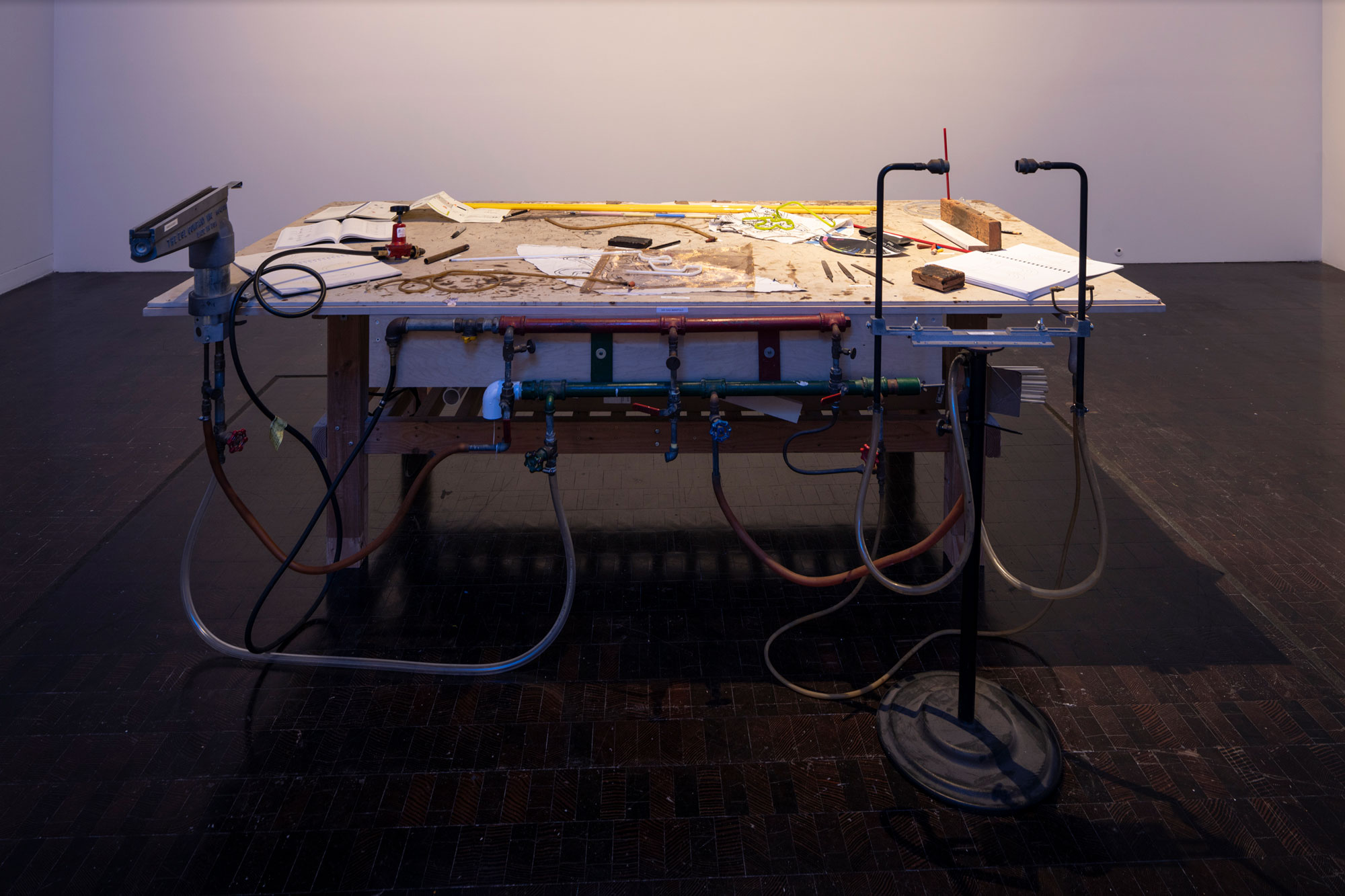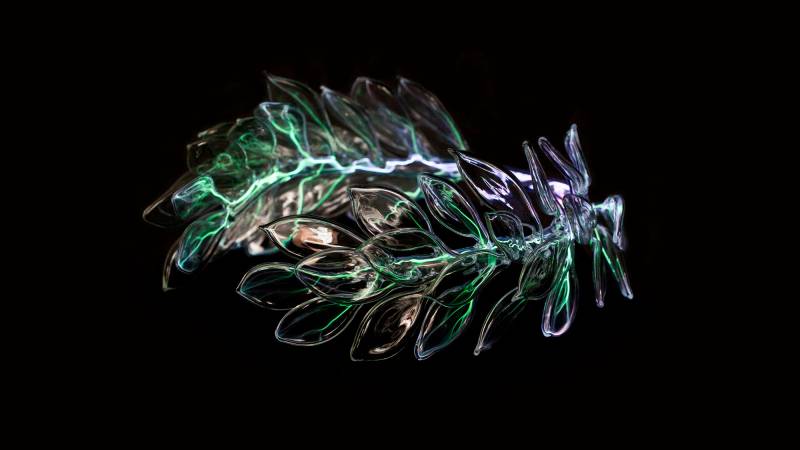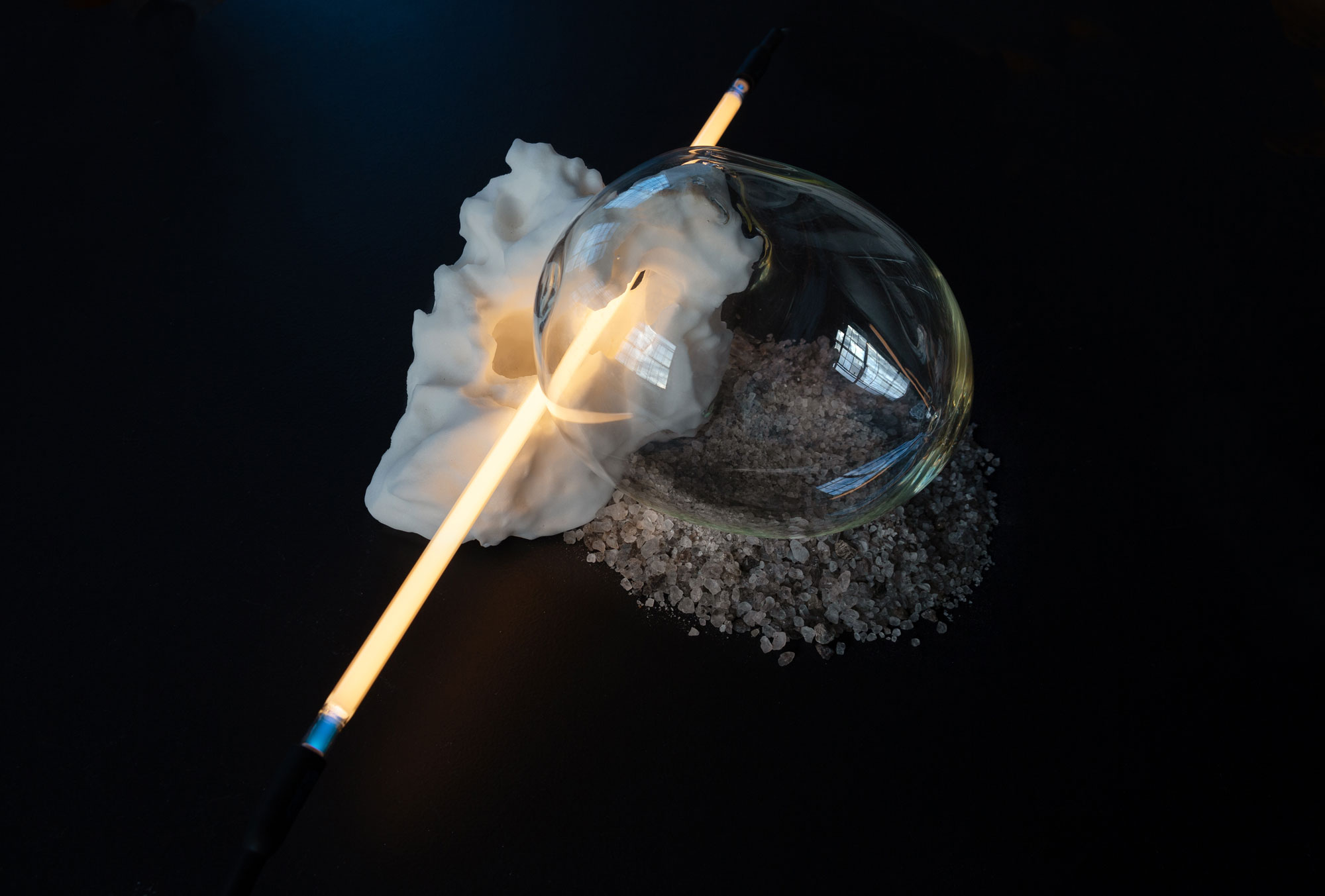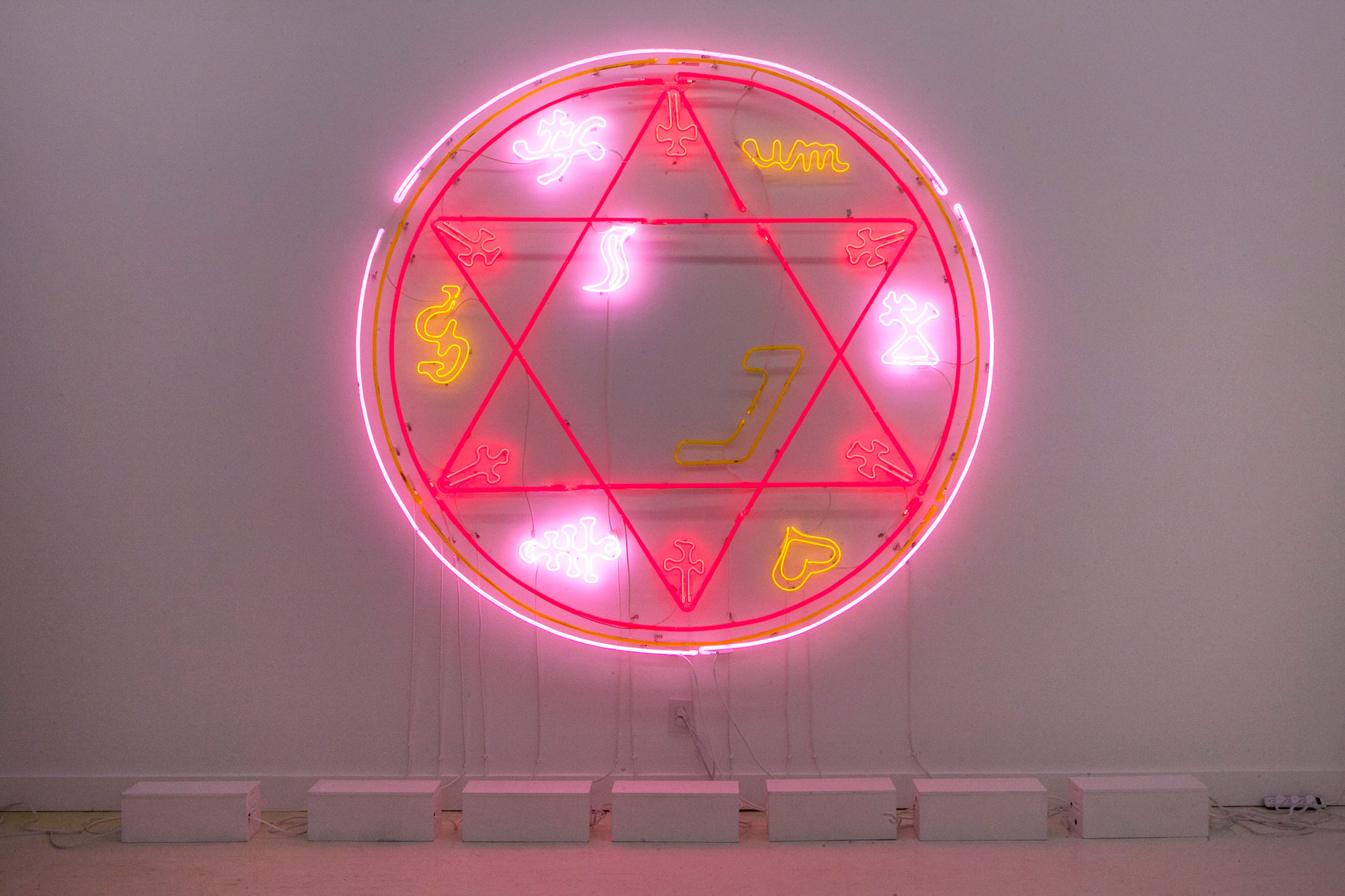Neon art is elemental (in the periodic table kind of way). Sure, plenty of sculpture is made out of gold, silver, copper or iron, but these are all fairly run-of-the-mill metals. They behave in fairly run-of-the-mill ways.
But put an electric charge into a tube of helium, argon, neon or krypton, and seemingly magical things happen. All of those zaps and sizzles can be explained by science, but the gasses will also behave as they see fit — and therein lies one aspect of the medium’s artistic appeal.
At the Contemporary Jewish Museum, the organization She Bends has curated a group show of neon, glass, plasma and installation work for First Light: Rituals of Glass and Neon Art, on view through April 28. It’s an exhibition that not only challenges commercial uses of neon but the traditionally masculine world of its making. And while the nine artists included in First Light approach glass and neon in vastly different ways, they share an openness and enthusiasm about their processes, turning this humming, glowing assembly of works into a uniquely welcoming art show.

Most notably, we don’t get simply their artwork, but two displays demonstrating just how neon gets made. At the first one, a lightly scorched bending table scattered with paper patterns shows how straight tubes become three-dimensional objects through precise heating and careful pressure. In the final galleries, we see a mock-up of a bombarding table, complete with the valves, tubes and gauges used to heat impurities out of a glass tube, create a vacuum, pump in noble gas and electrify it.
Easy, right? It is eminently clear from the outset of First Light that this is a persnickety and highly technical art form. And yet most of the artists in the show push well beyond the already-complicated norm, both expanding and deconstructing our idea of neon.





